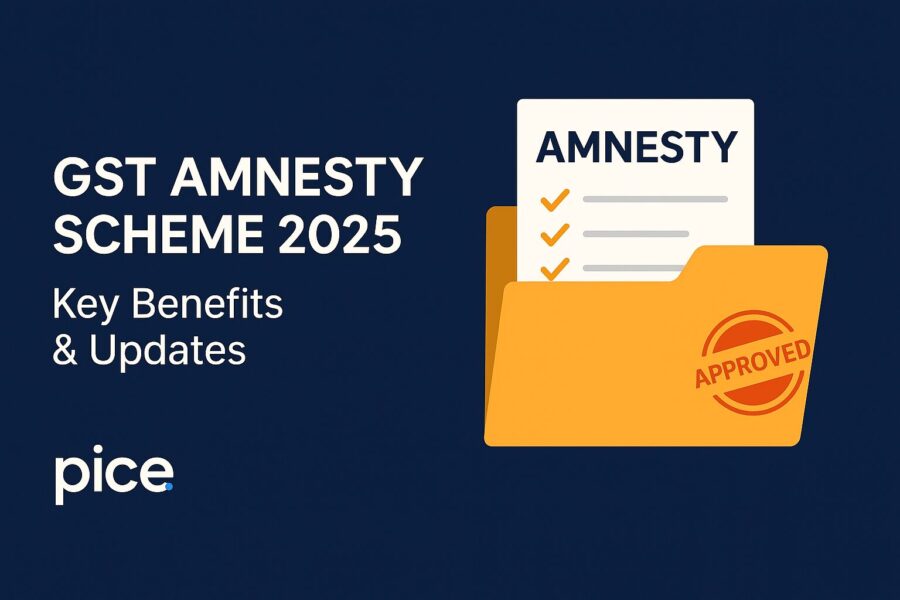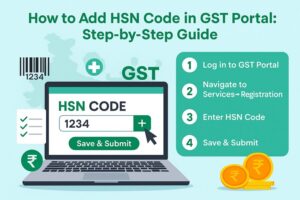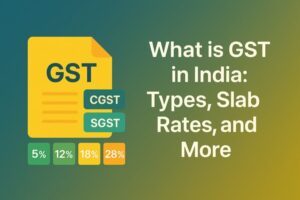GST Amnesty Scheme 2025: Key Benefits & Updates
- 13 Nov 25
- 12 mins

GST Amnesty Scheme 2025: Key Benefits & Updates
Key Takeaways
- The GST Amnesty Scheme 2025 offers taxpayers a final chance to file pending returns with reduced penalties and interest.
- Section 128A enables full waiver of interest and penalties for taxpayers who clear disputed tax demands by March 31, 2025.
- Taxpayers must submit waiver applications before June 30, 2025, along with proof of ‘Appeal Withdrawn’ status where applicable.
- The scheme excludes cases involving erroneous refunds or pending appeals that have not been withdrawn.
- Despite challenges like ITC restrictions, the scheme significantly reduces late fee burdens and helps revive non-compliant businesses.
Are you a taxpayer who has unfortunately missed out on the timeline to file GSTR-3B for the previous tax periods and is currently facing the resulting penalties and interest?
With the introduction of the GST Amnesty Scheme 2024, the government has extended a relief option, or a 'second chance', to taxpayers, allowing them to rectify their mistakes and avoid unnecessary financial burdens.
As of June 8, 2025, a staggering 3,02,658 waiver applications have already been filed. This scenario vouches for the scheme's popularity. Learn what exactly this scheme entails and how you can benefit from it in the upcoming sections.
About the GST Amnesty Scheme
Here’s what the timeline for the GST amnesty scheme looked like over the past decade:
● The GST Amnesty Scheme was meant to extend from July 2017 to September 2018, at first. It was a one-time extension of the time limit offered to taxpayers. They could then file the returns which were pending on or preceding 31st March 2019.
● In the early half of 2020, tax professionals as well as industry leaders pleaded with the government to restart the GST amnesty scheme. They urged the authorities for several months, citing causes related to the COVID-19 pandemic. Finally, the government paid heed to the request.
● The Central Board of Indirect Taxes and Customs (CBIC) proceeded to implement the GST Amnesty Scheme for the 2nd time via a notification, dated 1st of June, 2021. This was applicable to all the GSTR-3B returns pending for the previous tax periods, falling between July 2017 and April 2021.
● In February 2023, the GST Council conducted its 49th meeting. They recommended the implementation of the GST amnesty scheme for such taxpayers who were yet to file the GSTR-4, GSTR-9 and GSTR-10 (for financial years in the past).
The Council also suggested extending relief to persons whose GST registrations were cancelled. This could be made possible if the latter were allowed more time to revoke the cancellations.
Moreover, the authorities should not be invoking Section 62 for the failure of certain taxpayers' ends, who were not able to provide the returns by a set time specified in the notice, if they had filed on/before 30 June 2023.
● In the 53rd meeting, the GST council recommended introducing Section 128A for the first time. The Section 128A provided a waiver of interest and penalty on tax demands raised under Section 73, eliminating the burden of compliance on the taxpayer.
The very 1st proviso to Section 128A(1) extended eligibility to certain cases under which the original notice had been issued as per Section 74(1). However, the authorised officer had been directed under Section 75(2) to assess the tax under Section 73(1) again.
The 54th meeting of the GST Council followed, and Rule 164 was introduced (effective from 1st November 2024 through the notification No.20/2024- Central Tax, which was dated 8th October 2024). Moreover, the CBIC issued the circular no. 238/32/2024-GST to clarify various doubts relating to the CGST Act, 2017, Section 128A.
New GST Amnesty Scheme 2025 Updates
The GST Amnesty Scheme 2025 offers taxpayers a final opportunity to clear past dues and file pending returns with reduced penalties. Here's what’s new this year:
- The GSTN has issued a crucial advisory for taxpayers. Those intending to benefit from the scheme must complete their application before June 30, 2025.
- To ease the compliance burden and help taxpayers settle old disputes, the GST Amnesty Scheme under Section 128A offers a full waiver on pending interest and penalties. However, to avail this benefit, eligible taxpayers must pay the disputed tax amount on or before March 31, 2025.
- Eligible taxpayers who paid their GST tax demand on or before March 31, 2025, must upload a screenshot of the appeal case folder reflecting the status as ‘Appeal Withdrawn’. This step must be completed either while filing the waiver application or by editing the existing waiver application to include the required screenshot.
GST Amnesty Scheme 2024 Updates
Take a look at the features of the new GST amnesty scheme to stay updated on the developments from the past year:
● The new GST Amnesty scheme by Section 128A was implemented and came into effect on the 1st of November, 2024.
● This new scheme lets taxpayers apply for the waiver of interest/penalty if they have received notices u/s 73 of the CGST Act for the financial years 2017-18, 2018-19 or 2019-20.
● No refund shall be made as per the new scheme, in case the interest/penalty has already been taken care of.
● The department has specified that the provision aims to minimise litigation. Benefits will not be denied to eligible taxpayers owing to technicalities. Authorised officers are instructed to withdraw departmental appeals/accept orders if they are still being reviewed.
Who Is Eligible for the GST Amnesty Scheme?
As per Section 128A(1), the following entities are eligible for the GST Amnesty Scheme:
- Taxpayers facing demands raised through a Show Cause Notice under Section 73(1) or a statement under Section 73(3)
- Those who are liable to pay tax based on the Adjudication Order under Section 73(9)
- Individuals who are subject to an Order issued by the Appellate Authority or Revisionary Authority under Section 107(11) or Section 108(1).
GST Amnesty Scheme Benefits
Here's what taxpayers have to gain from the GST amnesty scheme:
● Get Back on Track with Filing Returns: Taxpayers can file the pending GSTR-3B returns without being limited by the previous periods.
● Avoid the Risk of Registration Cancellation: Taxpayers can avoid scenarios where their GST registration is cancelled due to not filing returns for 6 consecutive periods/3 quarters.
● Save on Late Fee Obligations: Taxpayers do not have to deal with heavy late fees. This makes filing pending returns easier.
● Revival of Business: Taxable persons can resume business operations without additional trouble, especially after economic downturns.
The GST Amnesty Scheme essentially offers a lifeline to taxpayers who are otherwise struggling with pending returns/related penalties.
Cases When the GST Amnesty Scheme Is Not Applicable
While the GST Amnesty Scheme offers relief to many taxpayers, it is important to note that not all cases qualify. Here are the specific situations where the scheme does not apply:
- It does not apply to amounts payable due to an erroneous refund, as mentioned under Section 128A(2).
- If a taxpayer has a pending appeal or writ petition that has not been withdrawn, the benefit cannot be availed under Section 128A(3).
Late Fee Reduction Under GST Amnesty
As discussed above, the GST Amnesty Scheme essentially offers a concession in terms of late fees to taxpayers. Here's how the process functions:
Maximum Late Fee:
● For GSTR-3B (with the tax liability): ₹1,000 for each return (₹500 CGST + ₹500 SGST)
● For Nil GSTR-3B: ₹500 each return (₹250 CGST + ₹250 SGST)
How it's calculated:
You will have to pay the lower of:
● Total late fees for each day of delay (according to the Act)
● Maximum late fee (₹1,000/₹500, depending on the return type)
Consider the following example:
Say, Company X missed filing GSTR-3B for January 2025. The due date was 20th February 2025. The company finds it more convenient to file the return on 2nd August 2025. The late fee, in this case, would be ₹8,150 (using the formula, ₹50 per day x 163 days).
However, the GST Amnesty Scheme allows for the maximum late fee to be ₹1,000. So, Company X will only have to pay a late fee of ₹1,000, plus the tax liability and interest.
GST Amnesty Application Filing: Resolution for Issue
While filing applications for GST amnesty, taxpayers may face certain technical issues. On 11th of June, 2025, the GSTN issued an advisory providing steps for the resolution of the same.
Here are a few simple steps you can follow to resolve any technical issues:
Step 1: Put in ‘No’ against the field that prompts ‘Whether the demand order is issued through the GST portal’.
Step 2: Type in the order number with the prefix of ‘ONL’ for the ‘Details of demand order’ field. For example, say that the online order number is “ABCDE12345X1Z2”, the taxpayer shall then have to put in the order number as “ONLABCDE12345X1Z2”.
If the order number is entered without the suggested prefix, the system will consider it to be a manual filing attempt.
Step 3: Choose the phone number and the email ID from the displayed drop-down menu. Manually type out any editable information beneath the 'Basic details' section.
Step 4: Type out the order details manually, alongside payment-related information and the demand details.
Here are the 2 scenarios that can result, with regards to payment of the demanded tax:
● Resorting to DRC-03: Put in the relevant payment details in Table 4.
● Opting for ‘Payment towards demand’: This will account for the payment details which cannot be filled out in Table 4. Taxpayers shall upload the payment information separately.
GST Amnesty Scheme: Challenges & Issues
The GST Amnesty Scheme comes with certain limitations, including:
● No Waiver of Interest for Individuals with Tax Liabilities: Taxpayers who have tax liability are required to pay interest on the delayed payments.
● ITC-related Concerns: Input Tax Credit (ITC) claims are not admissible under the GST amnesty scheme. This raises concerns among tax professionals.
● Time Limit Applies for ITC claims: The CGST Act assigns a specific time limit for ITC claims. It cannot be claimed when filing GSTR-3B for any past tax periods under the amnesty scheme.
Such issues hinder taxpayers from completely benefiting from the GST amnesty scheme.
GST Amnesty Scheme: Solutions to Challenges
Here are some recommendations for the improvement of the GST Amnesty Scheme:
● Expanding the Scope of the Scheme: The GST amnesty scheme can be expanded to include GSTR-1, GSTR-9 and GSTR-10 to extend comprehensive relief to taxpayers.
● Allowing ITC claims for the Bygone Periods: Allow for input tax credit claims for such periods where the time limit has expired.
● Giving the Option to Revise the Returns: Extending recipients of ITC with an option to revise their returns and claim eligible ITC.
● Proactively Addressing Legal Gaps: The government must note the existing anomalies and fill in the legal gaps as soon as possible. This will further ensure the scheme's effectiveness in the long run.
Conclusion
The GST Amnesty Scheme is an effort on the government’s end, undertaken to offer relief to taxpayers who have missed out on filing their returns by the established deadline.
By letting non-filers file pending returns and pay their due taxes without being entitled to hefty penalties, the scheme hopes to bring more enterprises into the economy.
However, to maximise the benefits reaped from the scheme, the government may have to consider making some changes. By expanding the scheme's scope, dealing with issues related to input tax credit claims and extending the scope to revise returns, this end is attainable.
Through such tweaks, the GST Amnesty Scheme shall become a significant step towards simplifying tax compliance and promoting an overall more business-friendly ecosystem.
💡If you want to streamline your payment and make GST payments via credit, debit card or UPI, consider using the PICE App. Explore the PICE App today and take your business to new heights.
 By
By 

















